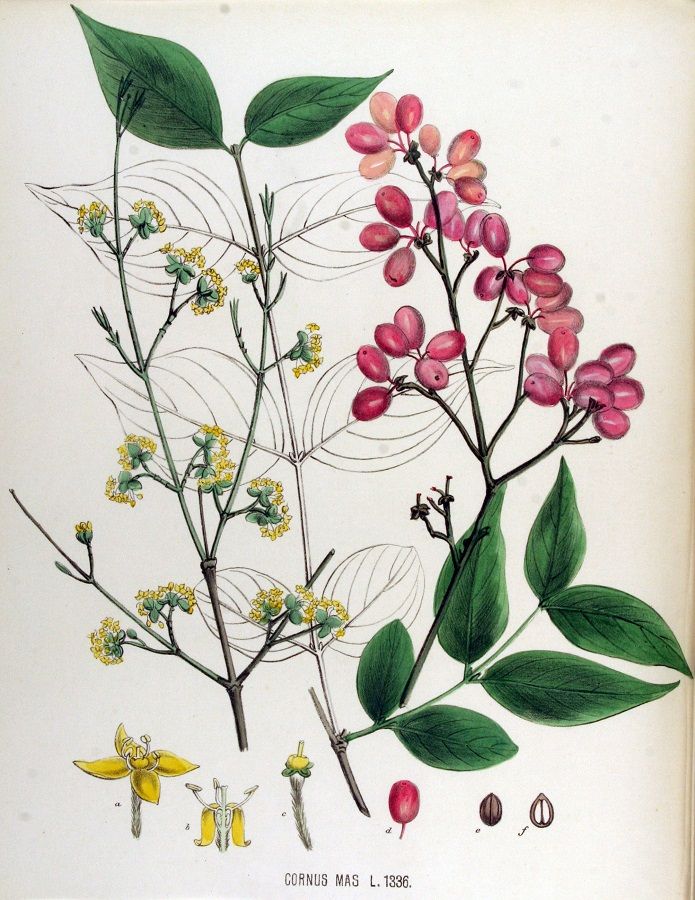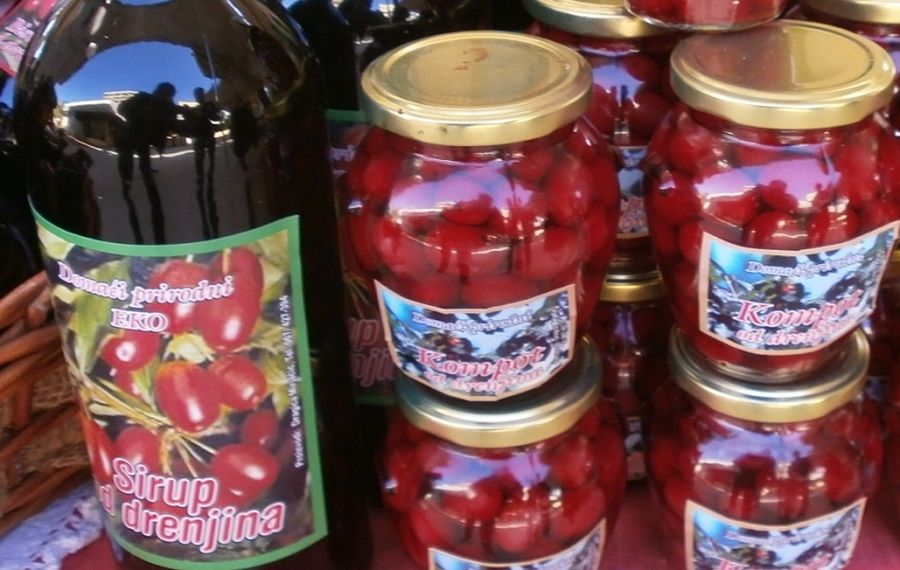This attractive, bright red colored fruit has been consumed for more than 5,000 years. While South Americans use the term "dogwood winter" to describe a cold snap in spring when it's not safe to plant crops, an old Montenegrin proverb „zdrav kao drjen“ is literally translated to „healthy as dogwood“, meaning „strong as an ox“.
Dogwood fruits (also named houndberries) are rich in organic acids, iron, and vitamins. They also help to normalize blood pressure and strengthen the walls of blood vessels, preventing the fragility of capillaries. The many positive effects of dogwood from the fruits, leaves, and bark) were recognized by Montenegrins centuries ago, and today in the Niksic area, there are households with 200-300 dogwood trees on their land - some grow up to 1000! Bright yellow dogwood blossoms cover the villages around Nikšić (Bršno, Gornje Polje, Viluse, Velimlje and others) in late February and it takes 5 to 6 months for the fruits to ripen. Houndberries are one of the latest harvests; no fruit tree takes as long to harvest as dogwood. A plantation of 100 trees can bring about 2-3 tons of fruits after harvested.

In the 19th-century, the legend King Nikola was amazed when first tried houndberry liquor, which was served to him sitting under a dogwood tree. The ruby-color liquor is just one of the many healthy and delicious houndberry drinks produced in Montenegrin villages. Undeservedly forgotten in the late 90s, houndberry became a popular healthy lifestyle trend, and today there are more than 30 entrepreneurs in the Nikšić area offering hand-picked and home-made products.
Though still rare to find in supermarkets due to its limited production, you can still try a full range of houndberry delights in the area of its origin, Nikšić, at the Dogwood days festival which has been organized for more than ten years every autumn. Here, you can meet local farmers certified as organic producers who magically turn this day of divine fruit into juice, marmalades, rakija, and vinegar. In addition, visitors are offered fresh, pickled or dried fruits.

1 kilogram of fresh houndberries will cost you about 1.2-1.5 euro and if you decide to make healthy and organic houndberry juice, here is how the Montenegrins cook it:
First, wash the fruits and put them into cold water which you'll bring to a boil for around 30 minutes until they get pale. Per 1 kg of houndberries, you take 1l of water. Remove them from the heat and drain. When drained, the fruits can be used for jam. Add 600-800 grams of white sugar and one bag of lemon acid per 1l of drained juice and put on the heat to boil again for 5-10 minutes. Fill the sterilized bottles or jars with the hot juice, close them firmly, pack in warm plaid and leave for a couple of days at room temperature. When ready, place them on the shelf in your storage next to pickles and jams and enjoy the hot color and sweet and sour taste on cold winter days.








